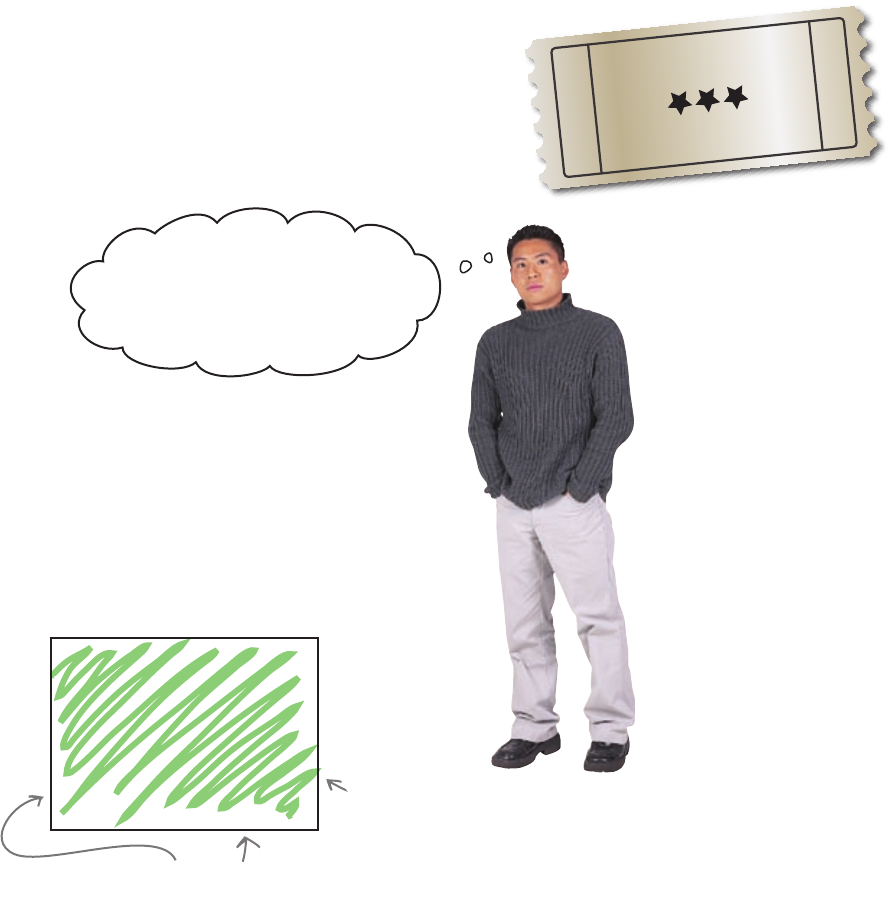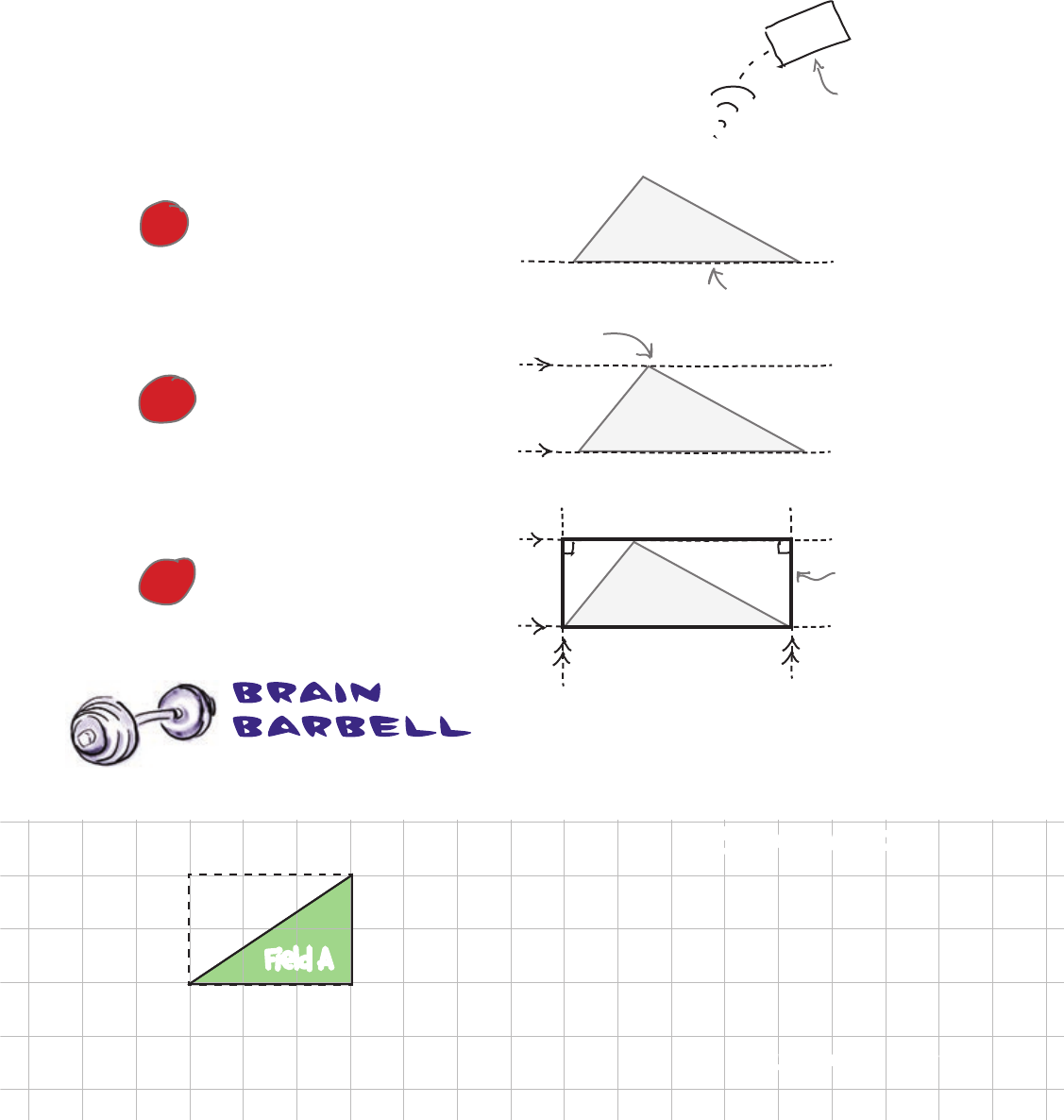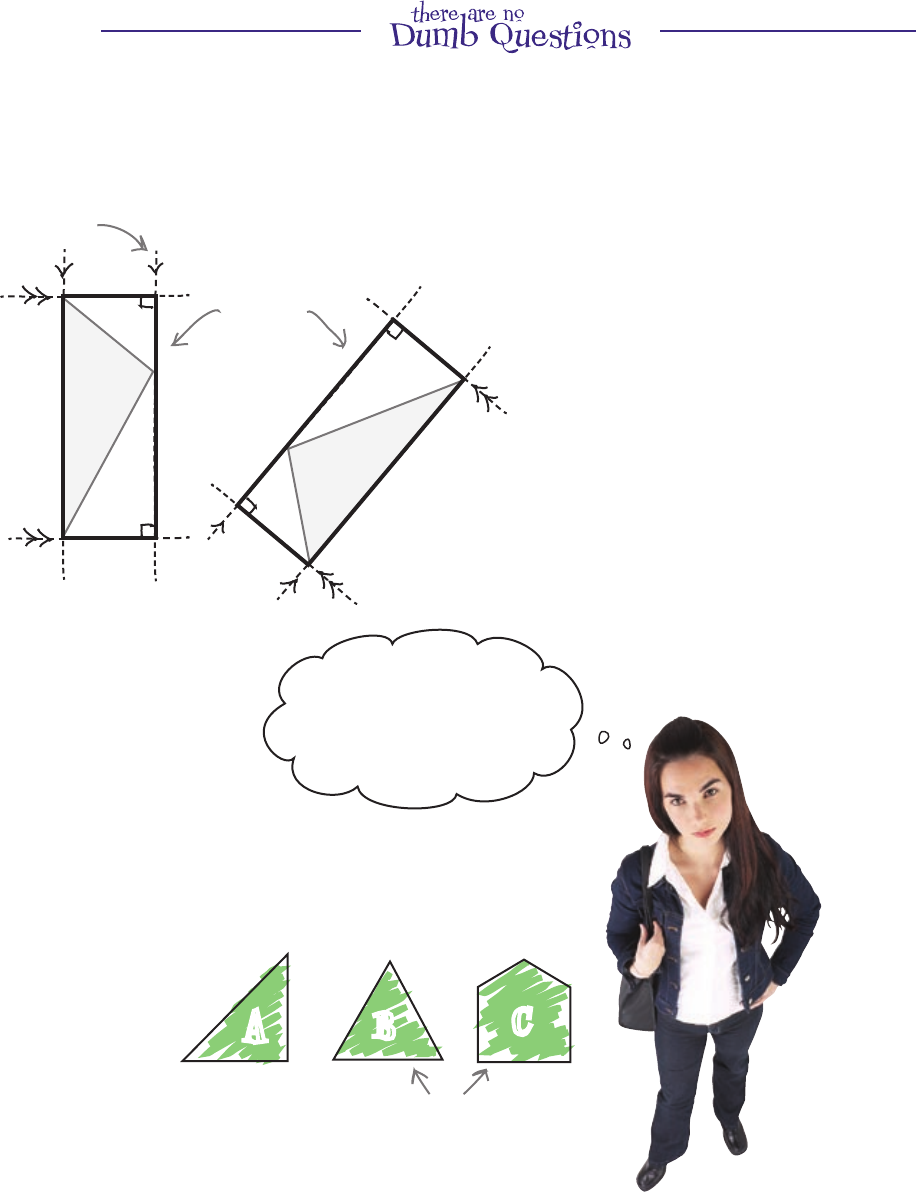
Not this sort
of bounding
Her
e’s the top
triangle properties
A triangle fits inside a bounding rectangle
A bounding rectangle is a box that fits tightly
around the triangle.
To draw a bounding rectangle:
1
Pick a side of your triangle to share
with the bounding rectangle.
They shar
e
this side.
(opp
osite) v
ertex.
2
Draw a line parallel to this side,
touching the opposite vertex.
3
Draw two perpendicular lines,
one at each of the other
vertices.
How does the shaded area of triangular field A compare with
This box is
the bounding
r
ec
tangle.
the area of the dashed bounding rectangle surrounding it?
Scale: 1cm = 30m
60m
Field A
90m
you are here 4 157

triangle area is half
How does the shaded area of triangular field A compare with
the area of the dashed bounding rectangle surrounding it?
Scale: 1cm = 30m
60m
90m
Field A
There are two different ways to think about this question....
1.
There’s a shaded triangle representing the
Field A
109m
60m
part of the rectangle which is the field.
90m
These tw
o
And there’s an unshaded triangle representing the
tr
iangles ar
e
part of the rectangle which isn’t the field.
If the triangles are congruent, then they must
both have the same area, so they share the
Not
field A
90m
60m
109m
congruent.
2.
Both methods giv
e y
ou the
same answer: half.
rectangle area equally—half each.
You might have recognized visually that each bit of
As they are both the same,
shaded cm square grid has matching unshaded bit.
the rectangle is shared
Counting up the shaded and unshaded squares:
equally—half each.
=
THE AREA OF THE TRIANGLE IS HALF THE AREA OF THE BOUNDING RECTANGLE.
158 Chapter 4

ar
en’t r
ight tr
iangles.
triangle properties
Q:
What if I’ve got a triangle which doesn’t have a horizonal
side? How do I draw a bounding rectangle?
A:Use a vertical side if you have one because it does make
things easier, but if you don’t have one, then any side will do.
These ar
e
both fine.
Q:
We’ve talked about sides and angles being the same
in congruent triangles, but how do you know that congruent
triangles have the same area, too?
A:With a bit of flipping and rotation you can always place
congruent triangles on top of one another, and they fit perfectly—so
they must have the same area.
Q:
What if I don’t know the size of the bounding rectangle?
A: Good point. We’re going to cover some ways to find that out.
For RIGHT triangles, this
half-the-rectangle thing
looks sensible. But what
about non-right triangles?
Good question—two of our
fields are not right triangles.
So what can we do?
A
B
C
T
hese t
w
o fi
elds
you are here 4 159

geometry detective
Rec
tangles ar
e easi
er to draw if y
our
v
ertic
es are a
ll on p
oints on the gr
id.
Her
e’s one t
o
s
tart you of
f.
160 Chapter 4
Geometry Detective
Using a ruler, draw some non-right triangles. Use a horizontal or vertical
grid line for one side (not two) of each triangle, and make the side that’s
on the grid line the longest side.
Draw a bounding rectangle around each triangle. How does the triangle
area relate to the rectangle area?

triangle properties
Draw at least three more
triangles on these pages
Need a 10-minute time-out?
If you’re feeling kind of fuzzy about
how your triangle areas relate to rectangle areas
try having a 10-minute brain-break, then look
again before you flip the page.
you are here 4 161
Get Head First 2D Geometry now with the O’Reilly learning platform.
O’Reilly members experience books, live events, courses curated by job role, and more from O’Reilly and nearly 200 top publishers.

